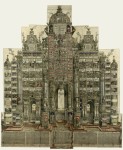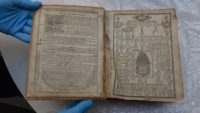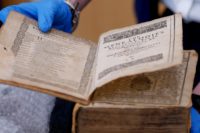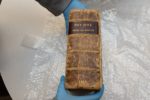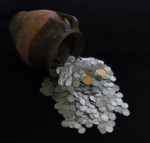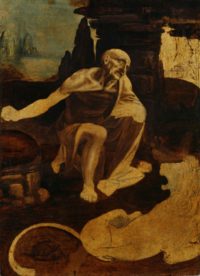 St. Jerome Praying in the Wilderness by Leonardo da Vinci is coming to the US in July. It will go on display at the Metropolitan Museum of Art to commemorate the 500th anniversary of the master’s death. The painting is part of the Vatican Museum’s collection, which, inconceivably vast though it is, only has this one painting by Leonardo da Vinci. As a matter of fact, it is the only painting by Leonardo da Vinci in Rome. It is also one of maybe a half-dozen paintings whose attribution to Leonardo da Vinci has never been in doubt.
St. Jerome Praying in the Wilderness by Leonardo da Vinci is coming to the US in July. It will go on display at the Metropolitan Museum of Art to commemorate the 500th anniversary of the master’s death. The painting is part of the Vatican Museum’s collection, which, inconceivably vast though it is, only has this one painting by Leonardo da Vinci. As a matter of fact, it is the only painting by Leonardo da Vinci in Rome. It is also one of maybe a half-dozen paintings whose attribution to Leonardo da Vinci has never been in doubt.
Four of the 15 or so surviving Leonardo paintings are incomplete, and St. Jerome is one of the four. The lion is still a drawn outline, as are Jerome’s foot, his robe draped on the ground, left hand, outstretched right arm holding a stone, one of his attributes, with which he will beat his chest. A church in the upper right of the panel is also a rough outline.
The painting represents Jerome (A.D. 347–420), a major saint and theologian of the Christian Church. The scene is based on the story of his later life, which he spent as a hermit in the desert, according to the 13th-century Golden Legend. The penitent Jerome—aged, gaunt, and nearly toothless—kneels in prayerful meditation before a cave in a rocky landscape. Reclining before Jerome is the tame lion, his companion in the desert and a central figure in the story of Jerome’s life. The saint’s face and gestures convey Leonardo’s theories on human physiognomy and the psychology of expression.
In its unfinished state, the painting shows us that Leonardo did not proceed in a wholly disciplined way. He was particularly interested in creating a detailed, anatomically correct under drawing for the saint’s ascetic body. The elegant silhouette of the reclining lion seems now especially powerful, because there is almost no modeling beyond the outlines. A close examination of the paint surface reveals the presence of Leonardo’s fingerprints, especially in the upper-left portion of the composition. Leonardo used his fingers to distribute the pigments and create a soft-focus effect in the sky and landscape.
Leonardo was painfully slow at painting, which is one of the reasons his oeuvre is so miniscule. He started this panel around 1483 when he was in Milan. When he died in Amboise, France, in 1519, it was still far from finished. We don’t know who commissioned it or why Leonardo kept altering it and working on it nigh onto 40 years.
The work is currently on display in a new location, the Braccio Di Carlo Magno on the left side of St. Peter’s Square, instead of in its usual spot in the Pinacoteca Vaticana. Access is free and the location is much more conducive to quiet contemplation than the frenetic mob scene in the Vatican Museum.
The Met’s exhibition runs through October 6th, 2019, after which St. Jerome will head back across the Atlantic the Paris where it will join other masterpieces by Leonardo at the Louvre’s quincentenary Leonardo exhibition.




